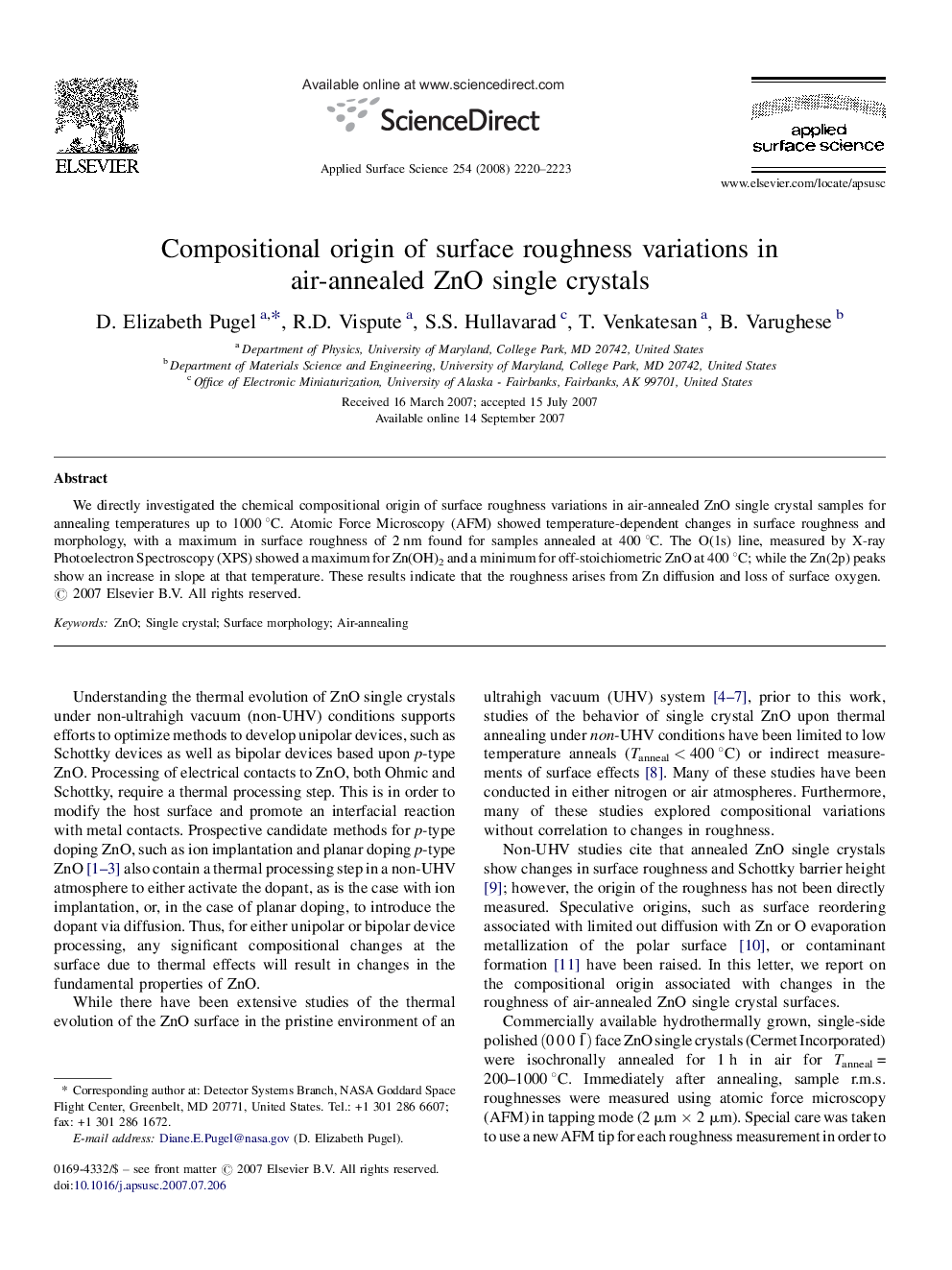| Article ID | Journal | Published Year | Pages | File Type |
|---|---|---|---|---|
| 5365836 | Applied Surface Science | 2008 | 4 Pages |
Abstract
We directly investigated the chemical compositional origin of surface roughness variations in air-annealed ZnO single crystal samples for annealing temperatures up to 1000 °C. Atomic Force Microscopy (AFM) showed temperature-dependent changes in surface roughness and morphology, with a maximum in surface roughness of 2 nm found for samples annealed at 400 °C. The O(1s) line, measured by X-ray Photoelectron Spectroscopy (XPS) showed a maximum for Zn(OH)2 and a minimum for off-stoichiometric ZnO at 400 °C; while the Zn(2p) peaks show an increase in slope at that temperature. These results indicate that the roughness arises from Zn diffusion and loss of surface oxygen.
Keywords
Related Topics
Physical Sciences and Engineering
Chemistry
Physical and Theoretical Chemistry
Authors
D. Elizabeth Pugel, R.D. Vispute, S.S. Hullavarad, T. Venkatesan, B. Varughese,
